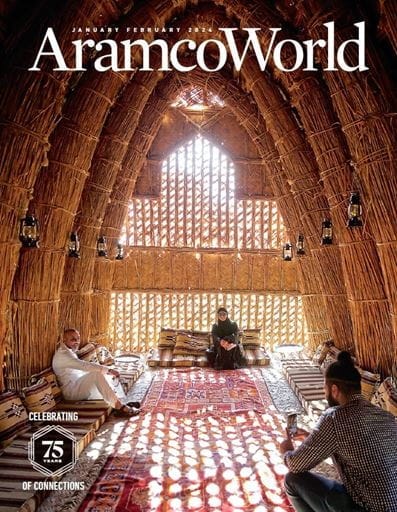Colin Nagy | May 2, 2025
The AramcoWorld Edition
On culture, magazines, and early soft diplomacy
This originally appeared behind our paywall. But opening it up to all today.
Colin here. I first heard about AramcoWorld at a great dinner party on the Upper East Side in New York, the kind where the conversation went everywhere. An attendee mentioned a very good magazine put out by the Saudi oil company. I looked it up the next morning and subscribed. It was so delightfully unexpected I had to check it out.
Founded in 1949, AramcoWorld began as a newsletter for American employees of Aramco. Over the decades, it evolved into a proper print magazine focused on the history, culture, and contributions of the Arab and Islamic worlds. While it’s published by Aramco Americas (a U.S.-based subsidiary of the energy giant), the editorial content is more culturally led and wide-ranging.
In recent issues, the magazine has explored everything from the traditional embroidered quilts of Bangladesh (Nakshi Kantha) to the medieval sugar economies of Morocco. A piece, Histories on a Plate, follows the movement of food traditions through diaspora. Another feature combines aquaculture with satellite imagery to tell a story about sustainability and global supply networks.
The magazine is free to read online (but you should read it in print), nicely designed, and ad-free.
It is a publication that is based on curiosity and perspective and stories are produced by a mix of freelance journalists, photographers, and scholars, and the editorial standards are high. It isn’t some empty vessel for corporate messaging, but rather a good cultural mag underwritten by a huge company.
Why is this interesting?
The magazine is a subtle example of branded content with depth—and perhaps one of the earliest. Before corporate storytelling (or corporate portraiture) became a comms strategy, AramcoWorld was creating something cool: cultural literacy, nuanced storytelling, and soft diplomacy through print.
In an age when most branded content is engineered for engagement metrics and plastered across online media buys to influence opinion, this feels like a relic in the best sense—carefully made, generous in spirit, and just off the beaten path enough to feel like a secret.
I’m now going deep into the online archives as well as some of the older print archives on ebay. (CJN)
